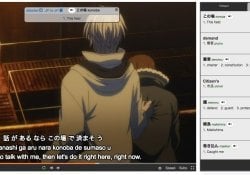Do you know or have you tried the delicious under the? This traditional Japanese noodle is made from buckwheat and can be served hot or cold. In this article, we will talk a little about this delicious Japanese noodles that has a long history and influence in many dishes in Japan.
Índice de Conteúdo
What is Soba Noodles?
The name under the (蕎麦) literally means buckwheat (or buckwheat), but this term ends up being used for noodles with other ingredients in the dough. This noodle is easily found anywhere in Japan for a low price.
As pasta made entirely of wheat is fragile, some restaurants use wheat flour in its composition. Some Japanese noodles use the term soba, but they are not made from buckwheat as is the case with yakisoba, chukasoba and okinawasoba.
Noodles are made by grinding cereals, obtaining a dough that is then kneaded, transferred to a wooden board, rolled out with a rolling pin, and then cut with a special kitchen knife called a sobakiri-bōchō.
The noodles are kneaded with water, resulting in a dark dough, which is then cut into strands. Soba dishes are usually accompanied by a broth called Tsuyu and usually some ingredients like chives and tempura flakes.
Some of the characteristics of soba are its crispy feel, the way the dough and sauce mix and meet on the tongue, as well as its smell.
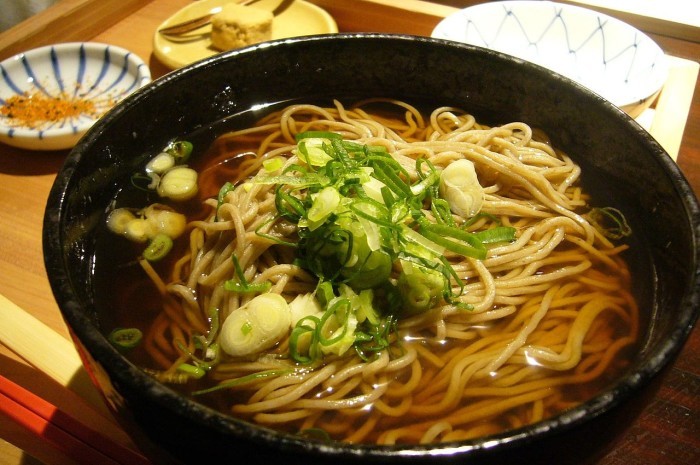
The Origin and History of Soba
The soba arrived in Japan along with Buddhism. It was simply a dough of buckwheat or buckwheat that was consumed in different ways by the religious. Until the soba cut like noodles became popular in the Edo Period (1600-1867).
The exact date is not known, but some records from 1614 show the word sobakiri (cut) in a monk's diary. Other records report the date of 1574.
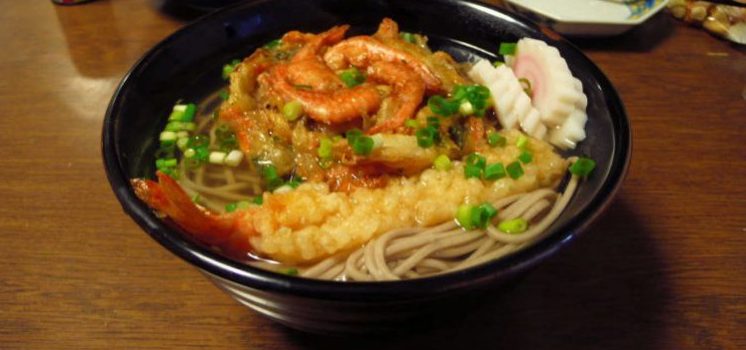
Where and how to eat Soba?
Currently this dish can be found in specialized restaurants where you can find the chef preparing the pasta yourself, or in fast food restaurants specializing in soba and udon. In fact, it's easy to find soba in just about any place or variety of restaurants in Japan.
In some train stations you will find several soba restaurants, some you must eat standing at the counter. Just take your ticket from the machine and place your order, usually a plate of soba costs between 500 and 1500 yen.
We cannot forget to enjoy this delight with the famous practice of making noise when sucking the pasta, this helps to strengthen the flavor and not burn the mouth. The broth is drunk directly from the bowl, eliminating the need for a spoon.
Soba can also be served cold (zaru soba) on its own with a dipping sauce. It is recommended to mix some of the green onions and wasabi into the dipping sauce. Then take a few strands of noodles, dip in and eat.
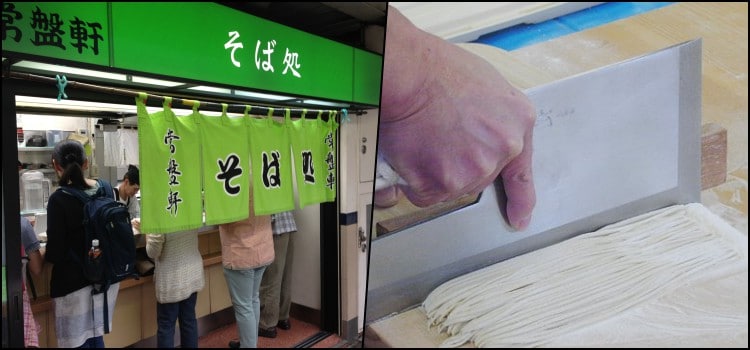
The article is still halfway through, but we recommend also reading:
Different types of Soba
Soba is as popular as ramen and udon. It can be served in many ways and with different ingredients providing infinite variety. Soba can be served separately as in a kind and soup.
We can start by citing the Zarusoba which consists of a cold pasta that comes alone and must be dipped in a sauce during the meal. The hot version without any accompaniment is called kakesoba, and is already dipped in a soup with ingredients similar to the cold dip sauce.
Some end up taking the name of their main ingredient. When it is accompanied with tenpura it is called tempura soba, another example is the sansaisoba, which is served with sansai, which are boiled wild vegetables. Others take the names of animals or elements that have a strong influence on Japanese religion. Let's see some of these below:
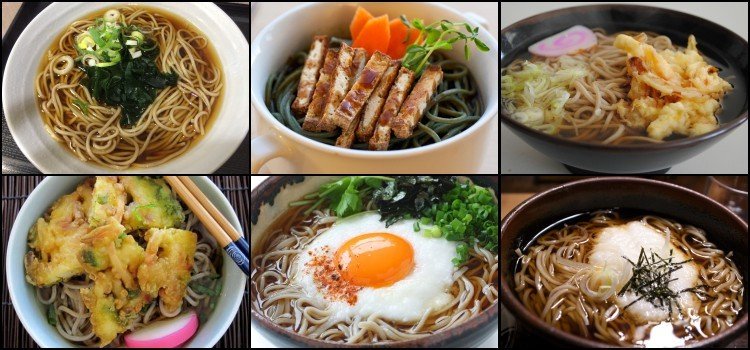
Main types of soba
- Kitsunesoba [狐そば] – It comes with pieces of aburaage (thin sheets of fried tofu);
- Tanukisoba [たぬきそば] – Usually comes with crispy pieces of fried tenpura dough;
- Nanbansoba [南蛮そば] – The word nanban refers to broth that has leeks;
- Kare nanban - Noodles with curry;
- Kamo nanban - Duck meat;
- have zaru [てんざる] – Cold accompanied by tenpura in a separate dish;
- Bukkakesoba [ぶっかけそば] - Cold served with broth over pasta;
- Morisoba [盛り蕎麦] – A cold soba that is served on a braided bamboo plate;
- Sansai Soba [山菜蕎麦] – Soba with wild mountain vegetables, this soba is very healthy and low in calories;
- Tsukimi Soba [月見蕎麦] – Soba with the addition of raw egg with red yolk looking like a full moon;
- Tororo Soba [とろろ蕎麦] – A yam-covered Soba with a sticky texture;
- Niku Soba [肉蕎麦] – Soba covered with pork or beef, resembling ramen;
- Kare Soba [カレ蕎麦] – Soba with kare sauce and usually a tonkatsu;
- Kamo Soba [鴨蕎麦] - A soba with shredded duck meat;
- Nameko Soba [なめこ蕎麦] – Soba with sauces containing Nameko mushrooms and other types of mushrooms;
It is worth remembering that pasta can accompany other ingredients not mentioned and can have cold versions. There are several dishes and regional types of this Japanese noodles.
Some restaurants top up your bowl again until you feel full. Soba is part of the daily life of the entire Japanese population, I ate it myself every day. Is that you? Ever experienced? We appreciate the comments and shares.


